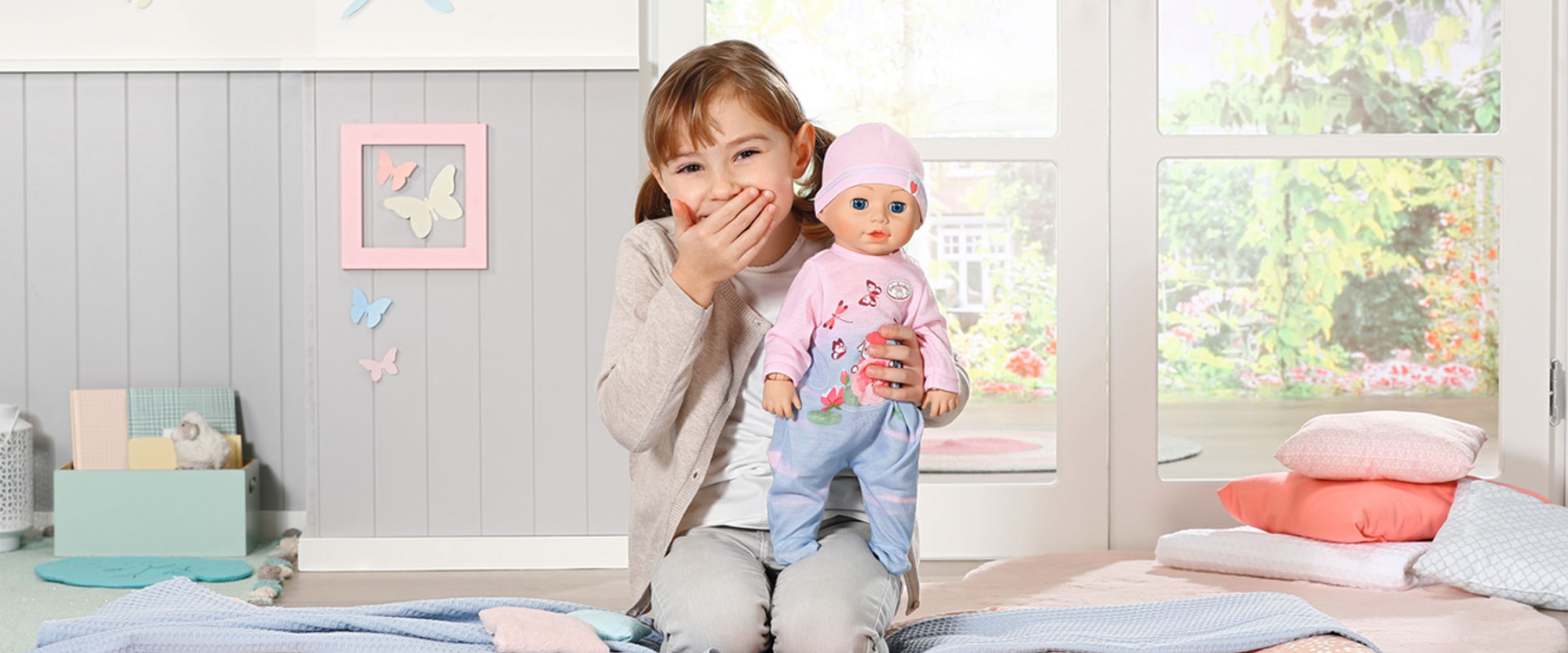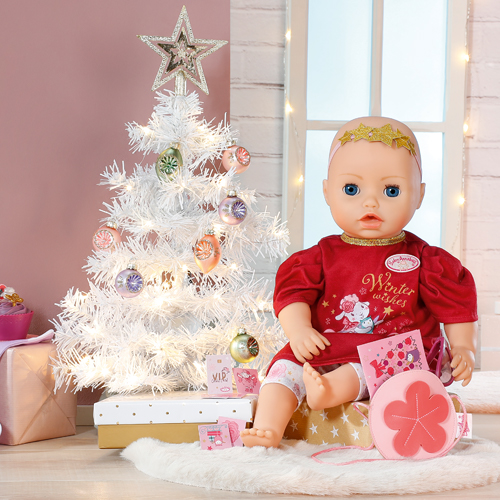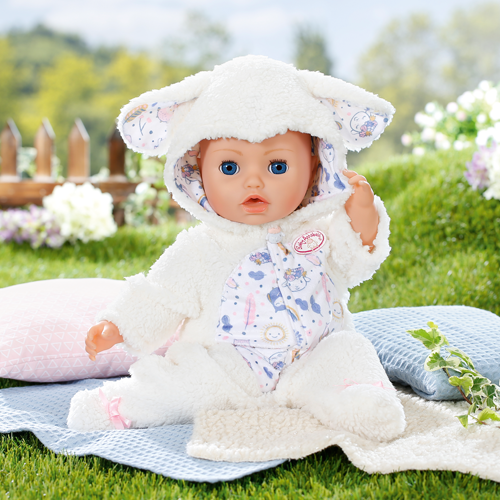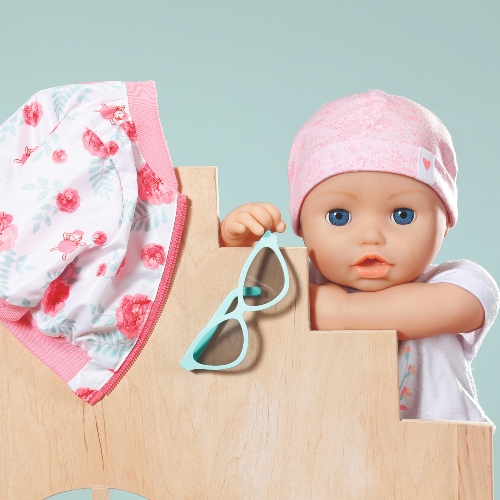Doll play is hugely beneficial for little ones. As well as bringing out their gentle, caring instincts and building fine motor skills, playing with dolls also encourages children’s communication development.
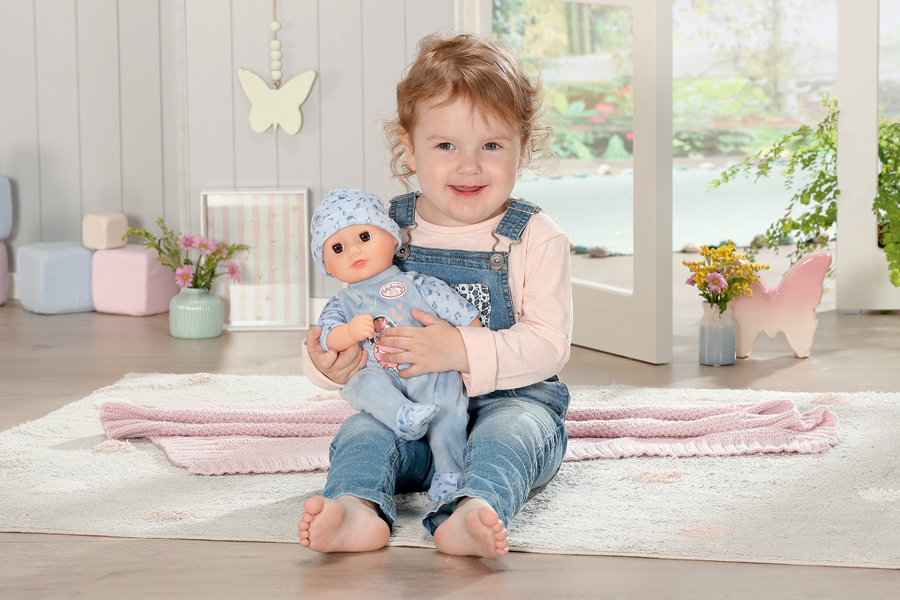
Tots naturally try to talk their way through their play by explaining what they’re doing – sometimes to themselves, but also to their much-loved baby doll or caregivers. Knowing how to support children’s communication and language can help this natural social skill blossom, in turn boosting their confidence and lowering their frustration.
Here, we explain the power of learn-to-talk toys and explore how to encourage children’s communication skills through doll play, with plenty of practical ideas to try with your budding babbler.
Cause-and-effect toys to encourage talking
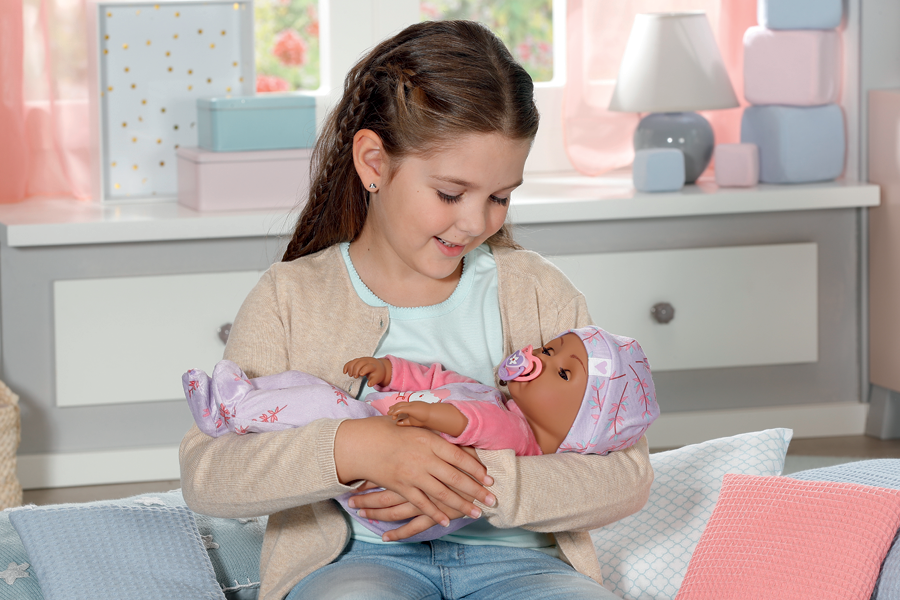
Interactive dolls such as Baby Annabell, Alexander and Leah can help children’s communication development, as well as social and fine motor skills. With life-like features such as moving their mouth when feeding, really sucking their dummies, crying real tears, and even burping when winded, our interactive dolls provide countless opportunities for children to learn to talk. Toys which not only help your sweet speaker-to-be learn language, but also show how their actions can cause something to happen, are hugely beneficial to a little one’s development. That’s why Baby Annabell, Alexander, and Leah come with plenty of cute accessories to further encourage imaginative roleplay and talking.
Narrating doll play for children’s communication development
Narrating activities to help children’s communication skills can easily become a daily ritual. It can be done in two different ways – self talk and parallel talk. Self talk can be done by letting your little one know exactly what you’re doing, as you’re doing it. Parallel talk is simply describing what your child is doing.
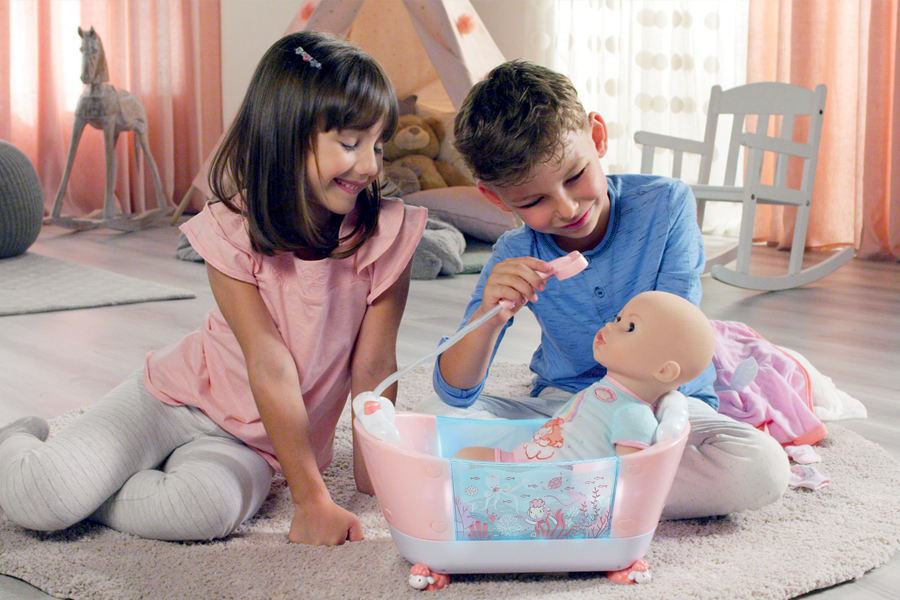
Pretend-play with Baby Annabell is a fun way to introduce children to a wider vocabulary of language, especially with sensory learn-to-talk toys such Baby Annabell Let’s Play Bath Time. As the tub engages all the senses with lights and sounds, you can pretend to wash Baby Annabell while saying “[Mama/Dada] is giving Baby Annabell a bath!” (self talk). When it’s time for your little nurturer to have a go, be sure to follow with: “[Child’s name] is giving Baby Annabell a bath!” (parallel talk).
Labelling toys to help talking
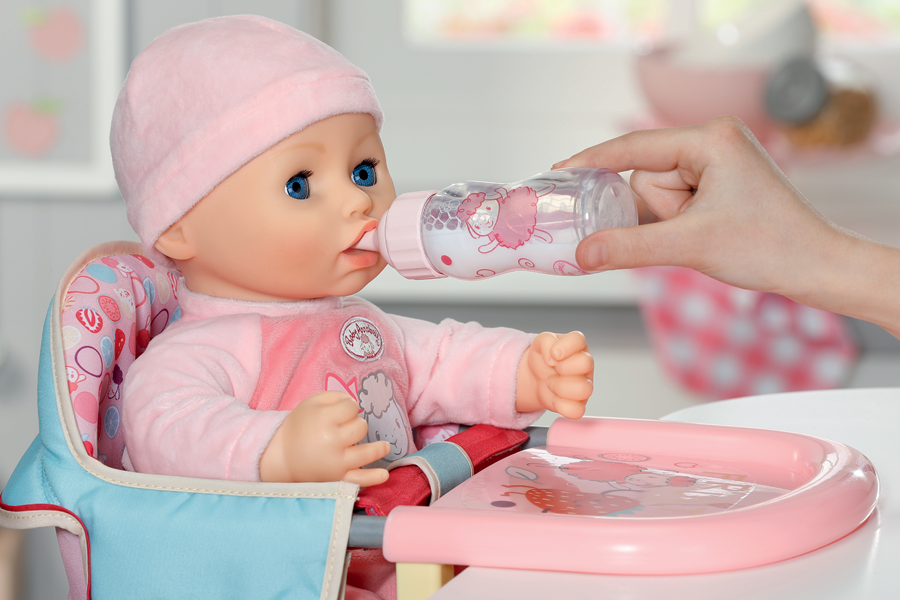
This simple method is a highly efficient way to encourage children’s communication development. To practise labelling, be specific about the name of an object. For example, instead of saying “Does Baby Annabell want this?” try “Does Baby Annabell want her bottle?”. Look for language-rich toys to help talking, such as:
Baby Annabell Lunch Time Trick Bottle
This adorable bottle is filled with magic milk that disappears when the bottle is tipped, so toddlers can see (and learn to say) when the “milk” is “all gone!”.
Baby Annabell Lunch Time Table
The perfect learn-to-talk toy – this unique table has an interactive menu selection game with light-up patterns and sounds. Your mini one can sit their dolly down and find out what she wants to eat! Does Baby Annabell like berries? If the menu lights up red with a funny “baa!” sound, that means no! What about peas? Watch the joy on your tot’s face when the green light and happy sound plays. She does! Yummy!
The more engaging features, clothing, and accessories you bring into Baby Annabell’s world, the more words your tiny talker can practise. With interactive dolls such as Baby Annabell Little Sweet Princess, your precious doll parent can learn nurturing words like ‘kiss’ – Little Princess even kisses back and blushes!! She comes with a range of learn-to-talk toy accessories, each presenting a new word to learn – from hairbrush to shoes to tiara!
Keep it consistent
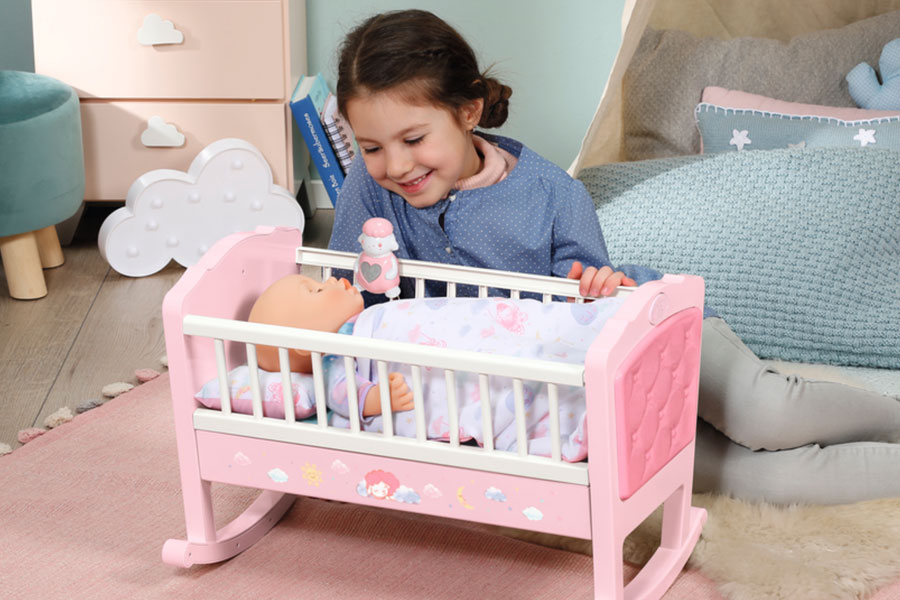
Little ones love routine, so bringing learn-to-talk toys into everyday activities can quickly get them used to the words and phrases associated with them. From breakfast ‘til bedtime, mimicking eating routines with the Baby Annabell Lunch Time Table or narrating Annabell’s wind-down routine with the Sweet Dreams Crib helps maximise activities to help children’s communication skills using consistent and imaginative doll play.
You can begin to nurture children’s communication development from young ages. Playing with our dolls for babies can help them learn their first words, while interactive dolls such as the crawling and walking Baby Annabell Emily Walk With Me helps expand their vocabulary and encourage their first steps.
Want more ideas for activities to help children’s communication skills? Help grow their confidence with our guide to anxiety-reducing doll play, or explore our Baby Annabell interactive range.
